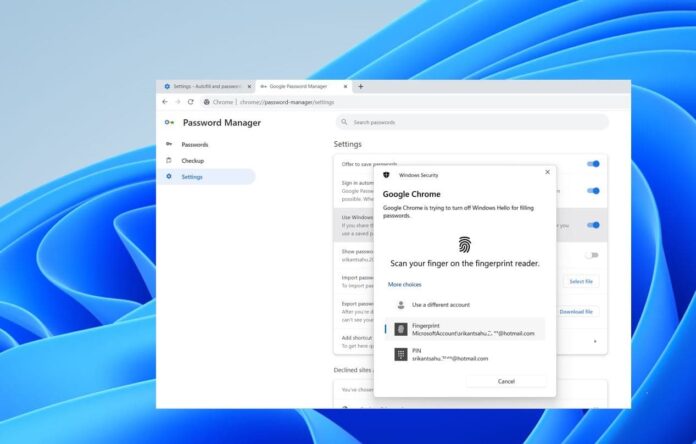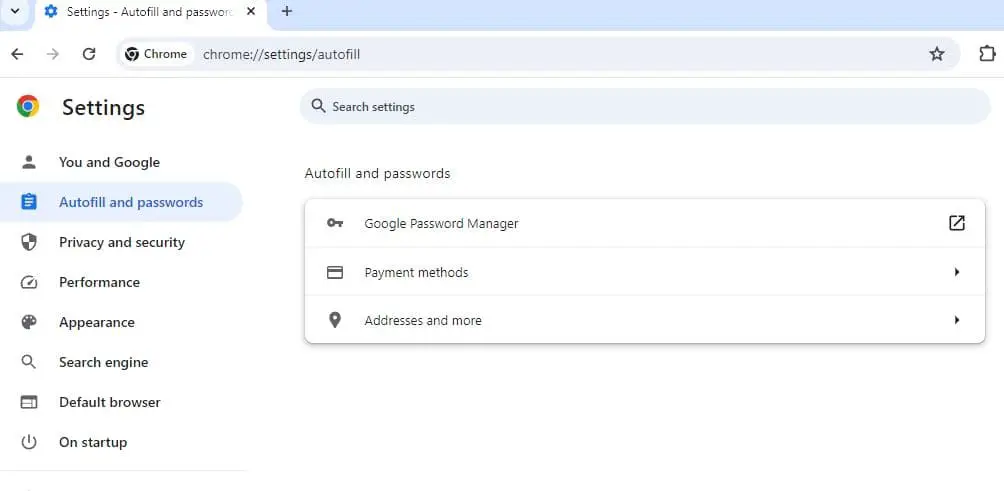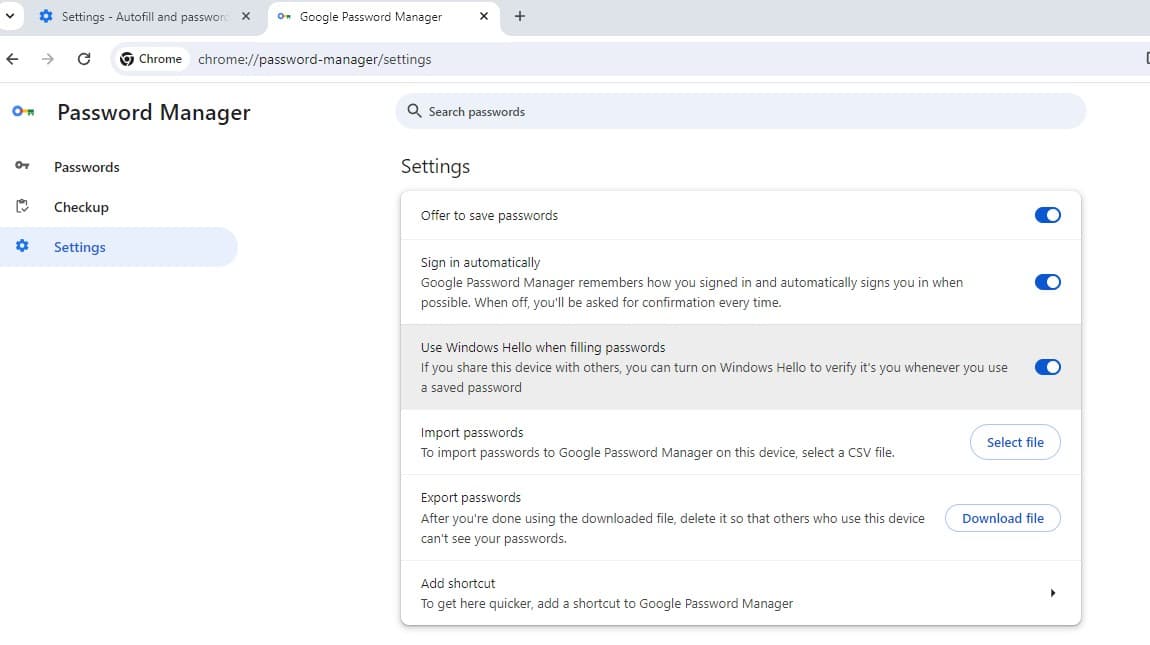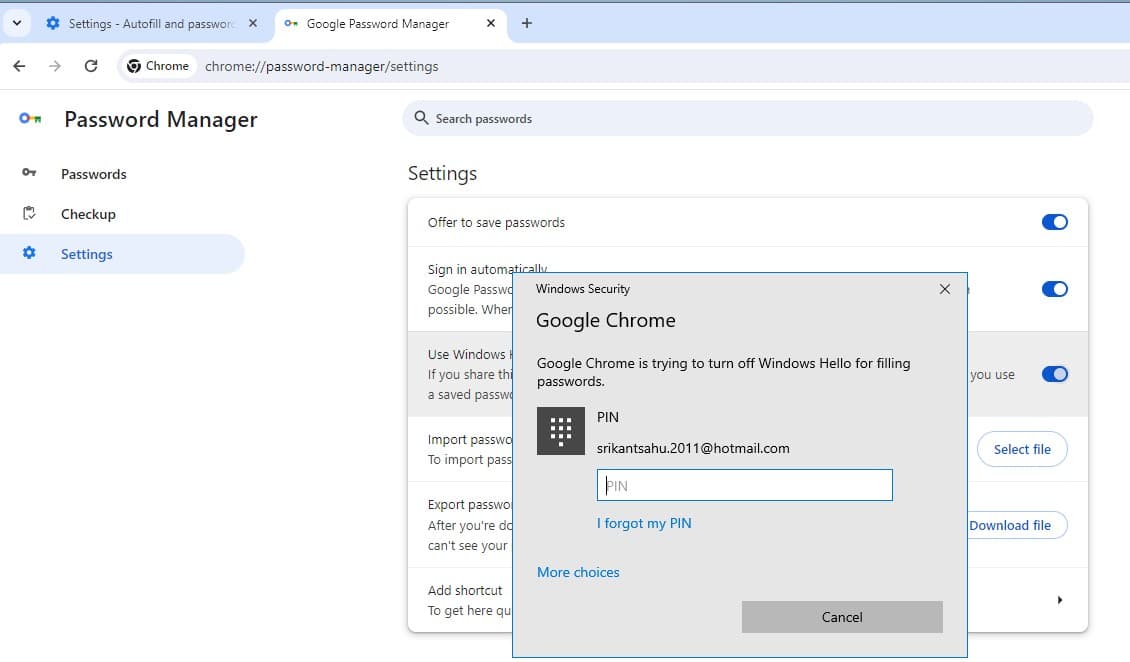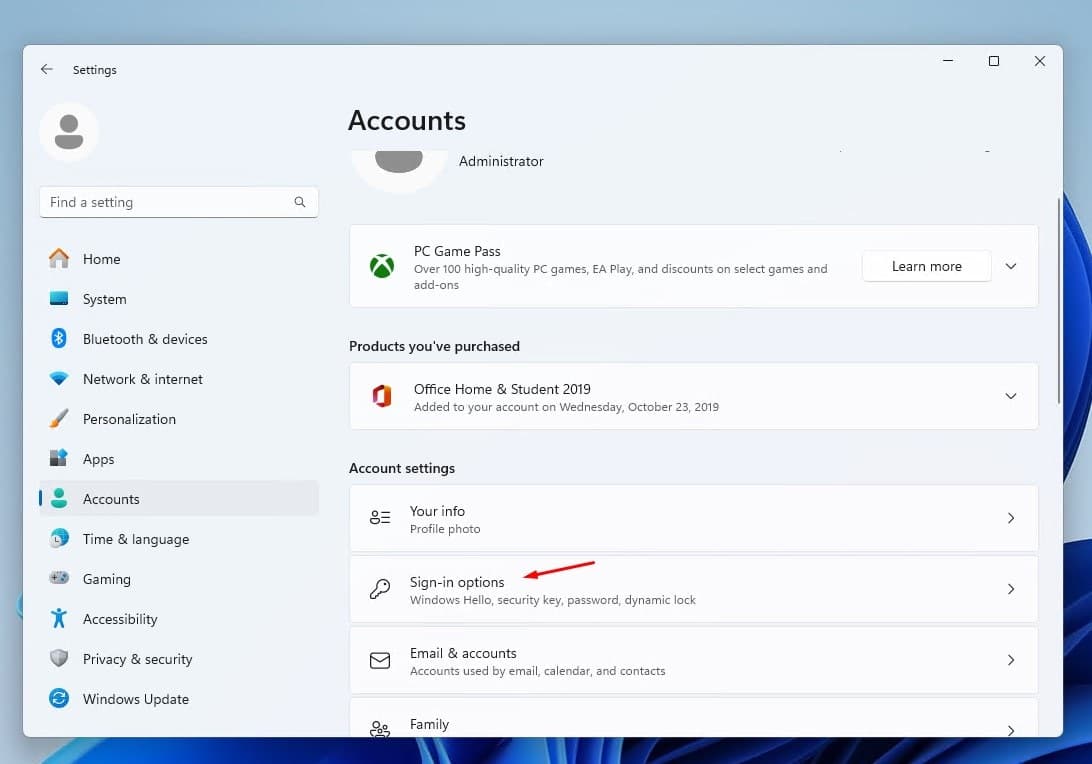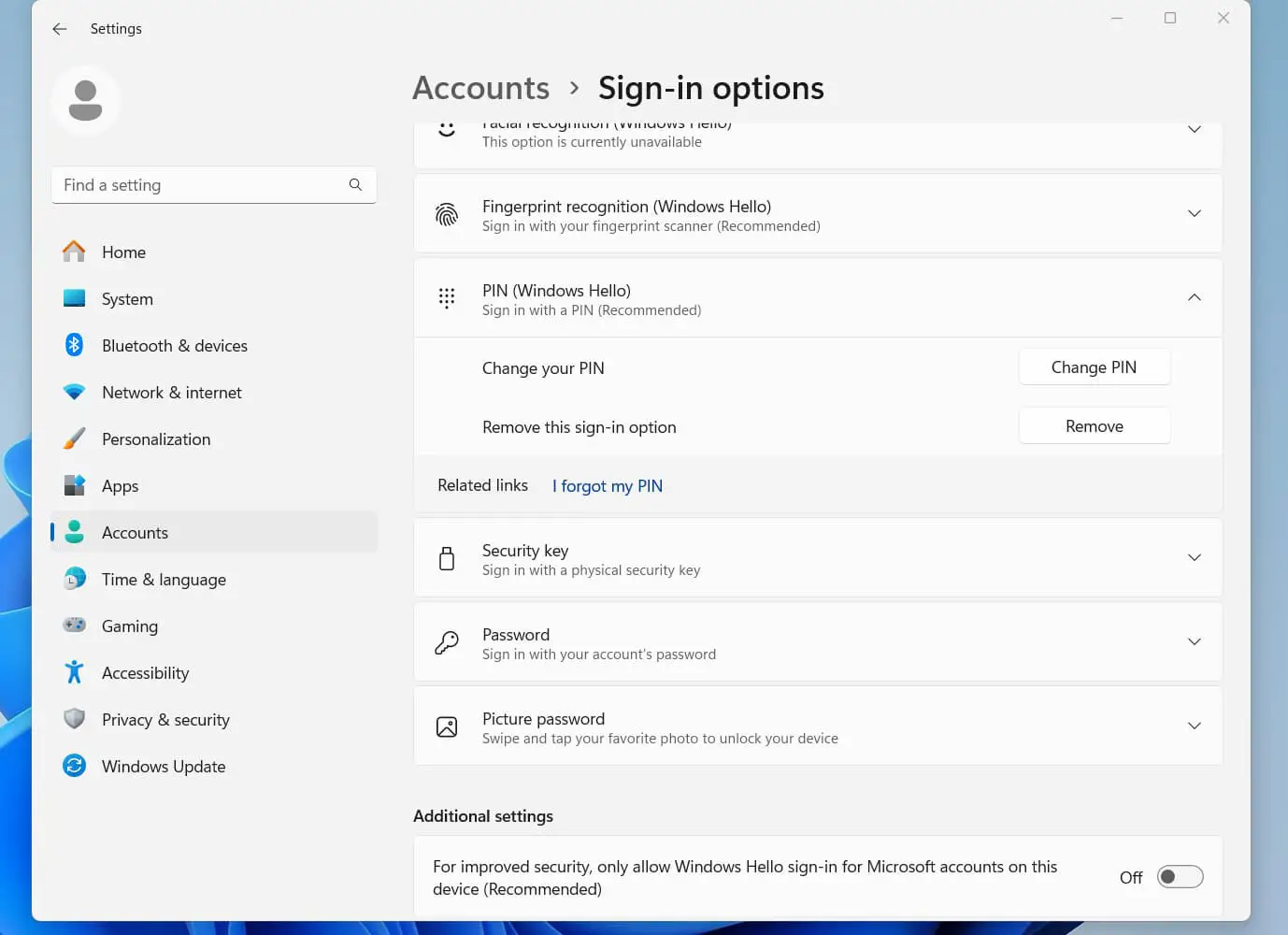Windows Hello is a biometric authentication feature introduced by Microsoft to enhance the security of user accounts and streamline the login process. This feature allows you to sign in to your device and supported apps using your face, fingerprint, or PIN. Google Chrome’s Password Manager now offers enhanced security with support for biometric authentication and Windows Hello PIN on PCs. This means you need to enter Windows Hello PIN, fingerprint, or facial recognition to verify your identity before automatically filling in your saved passwords.
While this is a valuable feature for safeguarding your passwords, it may become annoying for daily use, especially if you frequently log in to various websites. This article explains How to Turn off Windows Hello for Chrome passwords (auto-filling saved passwords on Google Chrome).
Disable Windows Hello for Chrome Passwords
If you want to turn off Windows Hello for Chrome you have two options: either use Chrome settings or disable Windows Hello on your Windows 11 PC settings.
disabling Windows Hello for Chrome passwords is easy and quick. You can always re-enable it later if you change your mind.
- First, open Chrome and click on the three-dot menu icon at the top right corner. Then, select Settings from the drop-down menu.
- Click on, Autofill and Passwords then Google Password Manager. Alternatively, you can type chrome://password-manager/passwords in the address bar and hit Enter.
- Click on Settings from the left navigation page, and look for the toggle switch next to Use Windows Hello when filling Passwords.
- If it is blue, it means Windows Hello is enabled for Chrome passwords. To disable it, simply click on the switch and turn it gray.
- You might need to authenticate once before disabling this option “Windows hello for Chrome passwords”
That’s it! You have successfully disabled Windows Hello for Chrome passwords. You can still use Windows Hello to sign in to your device and other apps, but not for autofilling your passwords in Chrome. If you change your mind later, you can always re-enable the feature by following the same steps and turning the switch back to blue.
Disable Windows Hello PIN in Windows 10 and 11
Also, you can disable the Windows Hello feature on Windows 11 settings that by default turn off Windows Hello for Chrome passwords as well.
- Press the Windows key + I shortcut on your keyboard to open the Settings app on your Windows 11 device
- Click on Accounts from the left panel of the Settings app, then select Sign-in options in the right panel.
- This will show you the different ways you can sign in to your device, including Windows Hello.
- To disable Windows Hello, you need to turn off the option that says “For improved security, only allow Windows Hello sign-in for Microsoft accounts on this device”. This will allow you to use other sign-in methods, such as password or PIN, for your Microsoft account.
- If you have set up any Windows Hello features, such as face recognition or fingerprint scanner, you can now remove them by clicking on the feature and then clicking on Remove. This will delete any biometric data associated with the feature from your device.
That’s it! You have successfully disabled Windows Hello on your Windows 11 device. You can now sign in with your password or PIN as usual. If you ever change your mind and want to enable Windows Hello again, you can follow the same steps and turn on the option that says “For improved security, only allow Windows Hello sign-in for Microsoft accounts on this device”.
Also read:
